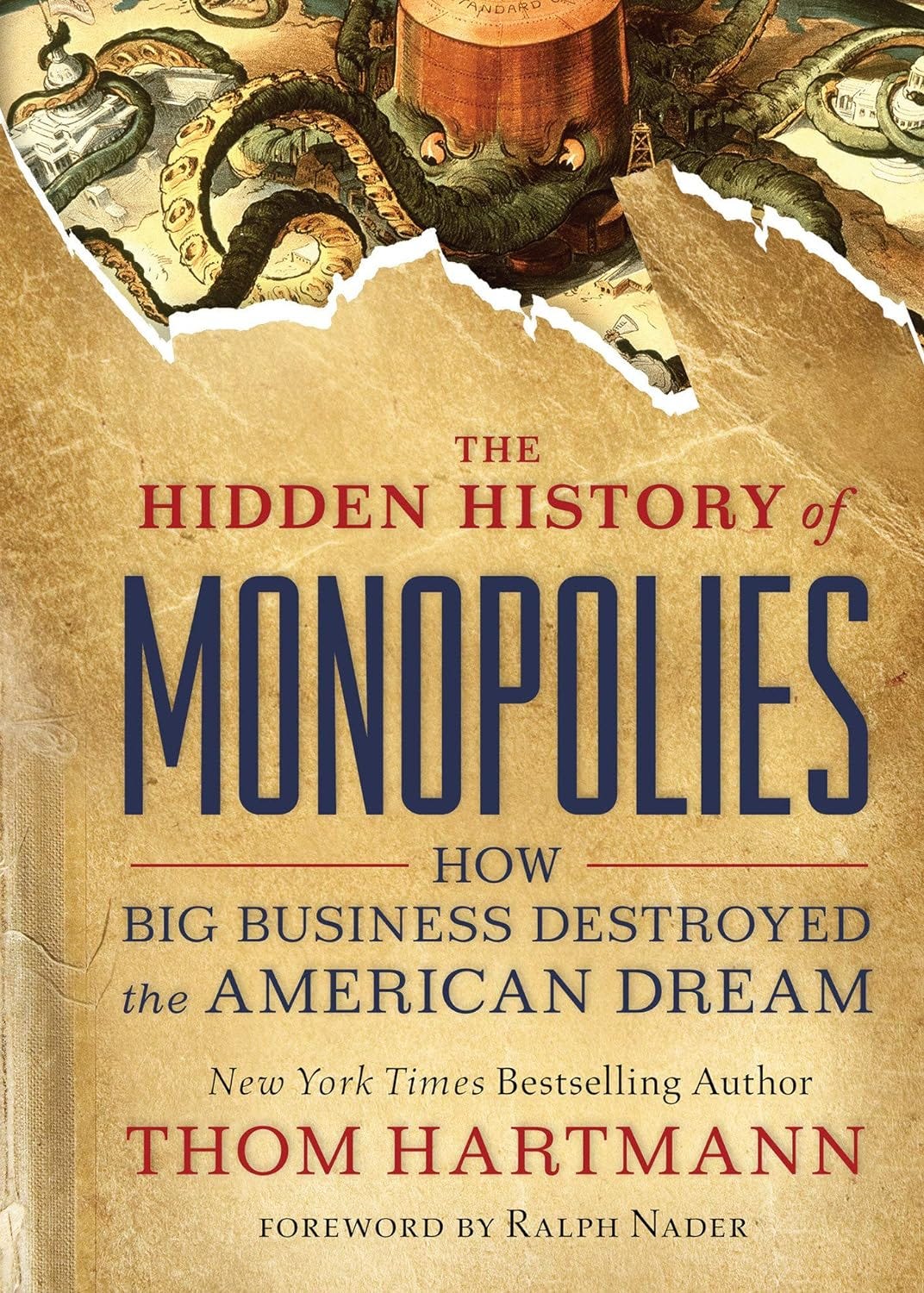Where Did America’s Middle Class Go?
The Hidden History of Monopolies: How Big Business Destroyed the American Dream

Where Did America’s Middle Class Go?
Then came the twin hits of trade liberalization in the 1970 — cutting tariffs and allowing cheap imports, so that American workers were competing with lower-paid, then-mostly Japanese workers—and Reagan’s massive tax cuts of the 1980s, which explicitly encouraged employers and CEOs to drain as much money out of their companies as they could rather than reinvest it or pay their employees well.
Since the 1970s, productivity has increased by 146%,16 but wages have actually either stagnated (if looking at household incomes; today many more are two-wage-earner households) or fallen (looking at individual incomes). CEO compensation has rocketed from 30 times the average worker’s to hundreds of times, in some industries even thousands of times (for example, Coca-Cola’s CEO, James Quincey, gets paid $16.7 million per year—or 1,016 times the typical employee’s pay).17
The Census Bureau reports that 2016 average household income was $57,60018—the combined income of (generally) at least two workers, or one worker working more than a single full-time job—a significant fall from its 1970 peak of $61,400 (in today’s dollars) for an individual worker with a single full-time job.
Because of Reaganomics, today it takes two or more people working in a household to maintain the standard of living that one worker could sustain prior to the 1980s.
From 1950 to 1970, both wages and productivity pretty much doubled, an increase of around 100% (it was in the high 90s, but let’s round off to keep things simple).19
Using 1950 as a benchmark, between 1970 and 2019 wages went up from around 97% to 114%, but productivity went from 98% above the 1950 number to 243%.20
That 130% increase in productivity while holding wages steady led to a massive increase in corporate profits. According to the Federal Reserve Bank of St. Louis (which compiles these statistics), the total profit of all American corporations in 1950 was $33 billion, or about $346 billion in today’s dollars. In 1960, it was $55 billion, or $469 billion today. The year 1970 saw total corporate profits at $86 billion, or $560 billion in today’s money.21
The ’70s and ’80s were the years of great change, with the end of Bretton Woods (the 1944 international conference that established the modern system of monetary management, including rules for commercial and financial relations among the United States, Canada, Western European coun- tries, Australia, and Japan) and many tariffs in the 1970s, and Reagan’s massive tax cuts (and anti-union crusades) in the 1980s.
By 1990, corporate quarterly (multiply by 4 for annual) profits were at $413 billion, or $798 billion in today’s dollars. In 2000, they hit $770 billion quarterly, or $1.13 trillion a quarter today.
A decade later, in 2010, they were at $1,890 billion (and this after the Great Recession of 2008–2009) every quarter, or $2.19 trillion in today’s dollars.
In 2018, the last year the Fed reported as of this writing, corporate profits were at $2.223 trillion—nearly $9 trillion a year or almost half of the entire nation’s GDP.22
Profits are a pretty reasonable indicator of things, as they’re more independent of overall economic activity than most metrics like GDP. From 1970 to today, we’ve seen a more than 400% increase in money going to the top as profits, compared with a rise in household income of around 15% (and a drop in individual income).
Since profits represent what’s left over after all the other bills are paid and investments made, for profits to have risen so dramatically since roughly the Reagan years, what happened?
Why didn’t all that money go, as it once did, to increases in wages so that workers were sharing in the increasing corporate prosperity they were helping create?
Monopoly plays a huge role in the answer.


